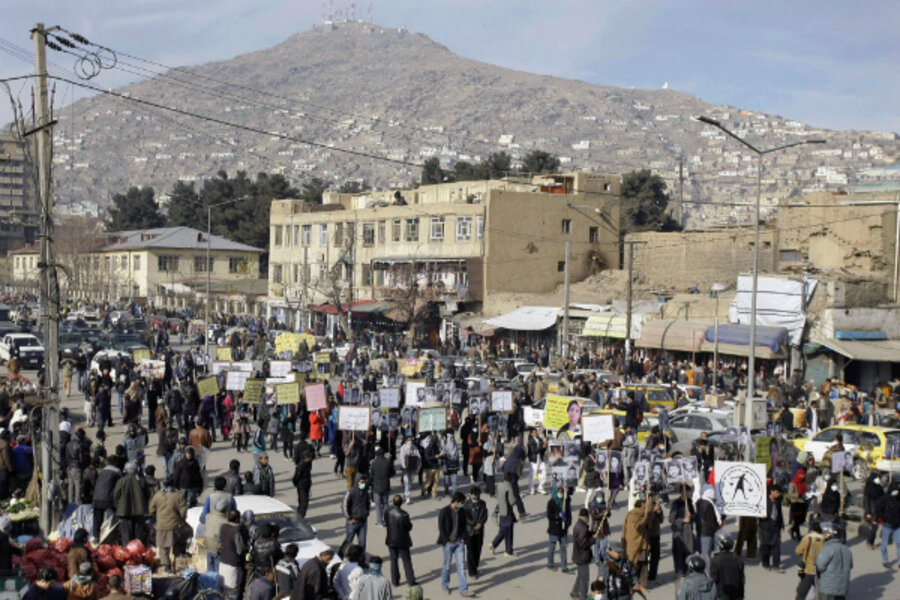Pentagon warns that insider attacks could derail the war in Afghanistan
Loading...
| WASHINGTON
Although the level of violence in Afghanistan is higher now than before the surge of US troops ordered into the country by President Obama in 2009, senior defense officials argue that the strategy was still a success.
That's one assessment of the latest congressionally mandated report from the Pentagon on how the war in Afghanistan is going.
Among the report's other findings:
• Although the capability of enemy fighters has declined from its peak in 2010, the Taliban remains a powerful force throughout Afghanistan and may try to regain lost ground through a campaign of assassinations and high-profile attacks.
• Insider attacks – the latest Taliban tactic – have the potential to derail the US war in Afghanistan.
• Just one of the Afghan National Army’s 23 brigades is able to operate independently, without US supplies or planes.
The report warns that the insurgency’s safe havens in Pakistan and the corruption within the Afghan government “remain the greatest risks to long-term stability and sustainable security” in the country.
For now, some 68,000 US troops remain in Afghanistan, a quarter fewer forces than were there last year.
At the same time, civilian casualties caused by US and NATO forces have declined by 28 percent since 2010.
There has been a rise, however, in enemy attacks against US forces over the same time in 2011, which the report attributes to a shorter poppy harvesting season (during which time fighting generally abates).
Some of the attacks have been high-profile, like the one in September on a major US base that destroyed six aircraft and damaged another two.
“Even though violence remains high, the fact it’s in less populated areas shows that it’s less effective violence, less effective in terms of altering the views of the people in Afghanistan as to where the future lies – whether it lies with the Taliban or the government,” says a senior defense official.
Even as the insurgency recedes in the north and west of the country, narco-trafficking and criminal networks are becoming more prominent in these regions.
But the biggest problem is the safe havens in the ungoverned regions of Pakistan, and US relations with Afghanistan’s neighbor remain strained, according to the report.
“I don’t want to leave you with the impression that we think everything is working well, because the safe havens do continue to exist,” said the official. “This is still a problem.”
And what about the training of Afghan security forces – the prime objective of the US troops remaining in the country? The report deems the training a steady success, as Afghan forces take over more missions. An official says that despite what the rating system would suggest – that only one of 23 brigades can operate independently – many units do plan and conduct their own operations. “They often don’t rely on any assistance from us at all,” said the official.
That said, the report also rates coordination between the Afghan Army and police as “poor,” and noted that the security forces will probably require an additional “decade of development” into 2024 to be truly independent.





